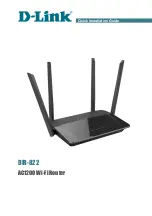
•
Set the number of seconds between re-authentication attempts as the value of the Session-Timeout
RADIUS attribute (Attribute[27]) and get an access policy against the client from the RADIUS server.
•
Set the action to be taken when the switch tries to re-authenticate the client by using the
Termination-Action RADIUS attribute (Attribute[29]). If the value is the
DEFAULT
or is not set, the
session ends. If the value is RADIUS-Request, the re-authentication process starts.
•
Set the list of VLAN number or name or VLAN group name as the value of the Tunnel Group Private
ID (Attribute[81]) and the preference for the VLAN number or name or VLAN group name as the value
of the Tunnel Preference (Attribute[83]). If you do not configure the Tunnel Preference, the first Tunnel
Group Private ID (Attribute[81]) attribute is picked up from the list.
•
View the NAC posture token, which shows the posture of the client, by using the
show authentication
privileged EXEC command.
•
Configure secondary private VLANs as guest VLANs.
Configuring NAC Layer 2 IEEE 802.1x validation is similar to configuring IEEE 802.1x port-based
authentication except that you must configure a posture token on the RADIUS server.
Flexible Authentication Ordering
You can use flexible authentication ordering to configure the order of methods that a port uses to authenticate
a new host. The IEEE 802.1X Flexible Authentication feature supports three authentication methods:
•
dot1X
—
IEEE 802.1X authentication is a Layer 2 authentication method.
•
mab
—
MAC-Authentication Bypass is a Layer 2 authentication method.
•
webauth
—
Web authentication is a Layer 3 authentication method.
Using this feature, you can control which ports use which authentication methods, and you can control the
failover sequencing of methods on those ports. For example, MAC authentication bypass and 802.1x can be
the primary or secondary authentication methods, and web authentication can be the fallback method if either
or both of those authentication attempts fail.
The IEEE 802.1X Flexible Authentication feature supports the following host modes:
•
multi-auth
—
Multiauthentication allows one authentication on a voice VLAN and multiple authentications
on the data VLAN.
•
multi-domain
—
Multidomain authentication allows two authentications: one on the voice VLAN and
one on the data VLAN.
Related Topics
Configuring Flexible Authentication Ordering, on page 1405
Open1x Authentication
Open1x authentication allows a device access to a port before that device is authenticated. When open
authentication is configured, a new host can pass traffic according to the access control list (ACL) defined on
the port. After the host is authenticated, the policies configured on the RADIUS server are applied to that
host.
Consolidated Platform Configuration Guide, Cisco IOS Release 15.2(4)E (Catalyst 2960-X Switches)
1347
Information About 802.1x Port-Based Authentication
Summary of Contents for Catalyst 2960 Series
Page 96: ......
Page 196: ......
Page 250: ......
Page 292: ......
Page 488: ......
Page 589: ...P A R T VI Cisco Flexible NetFlow Configuring NetFlow Lite page 509 ...
Page 590: ......
Page 619: ...P A R T VII QoS Configuring QoS page 539 Configuring Auto QoS page 645 ...
Page 620: ......
Page 750: ......
Page 1604: ......
Page 1740: ......
Page 2105: ...P A R T XII Configuring Cisco IOS IP SLAs Configuring Cisco IP SLAs page 2025 ...
Page 2106: ......
Page 2118: ......
Page 2164: ......
















































